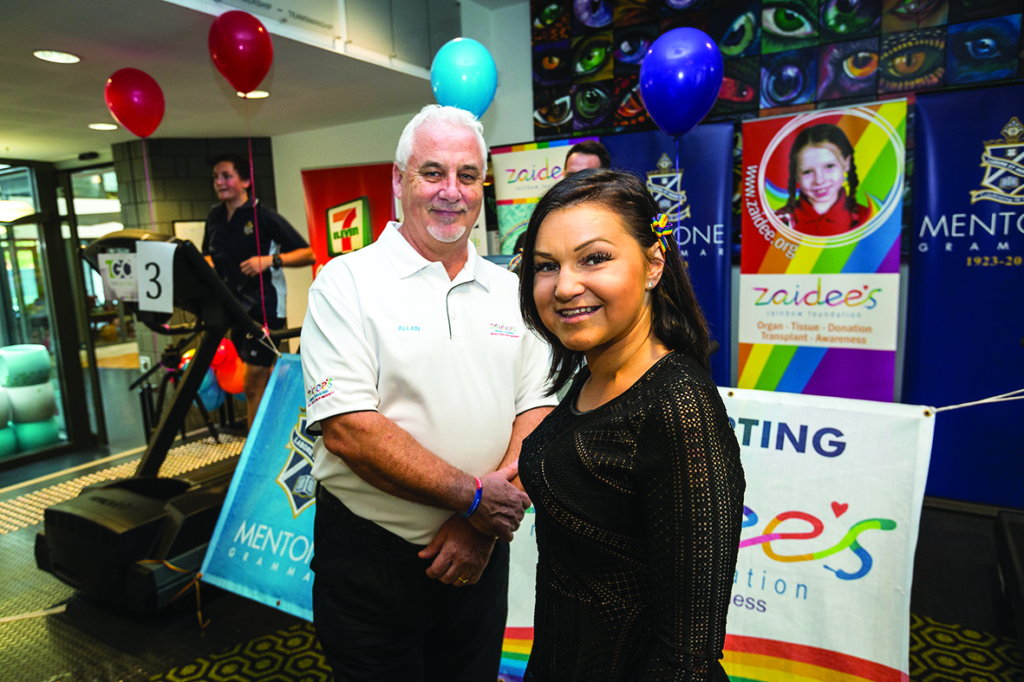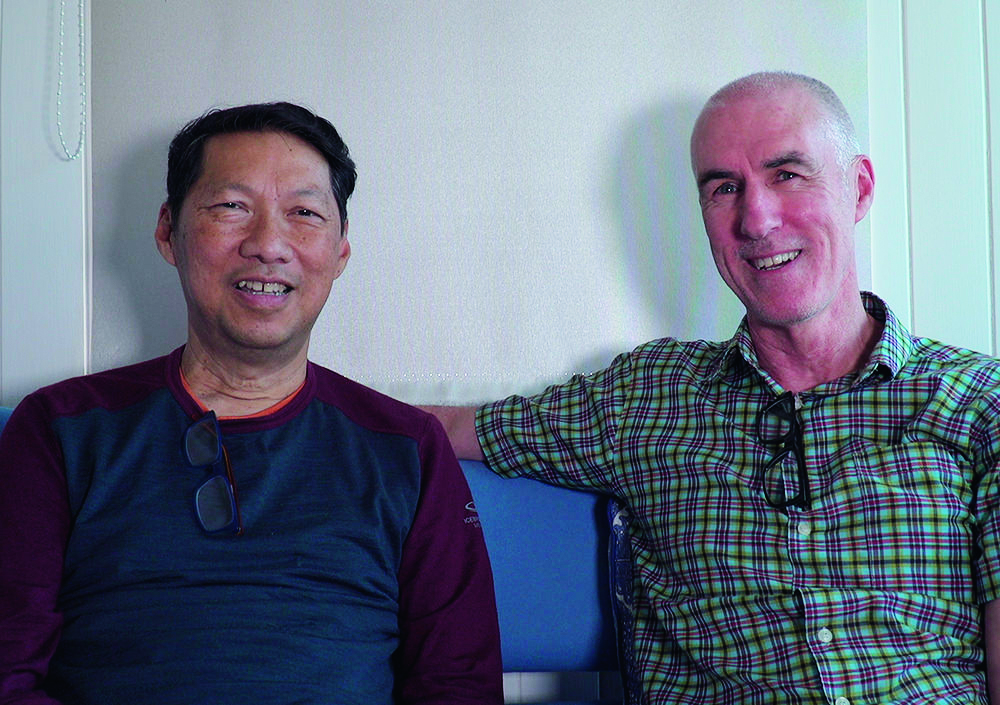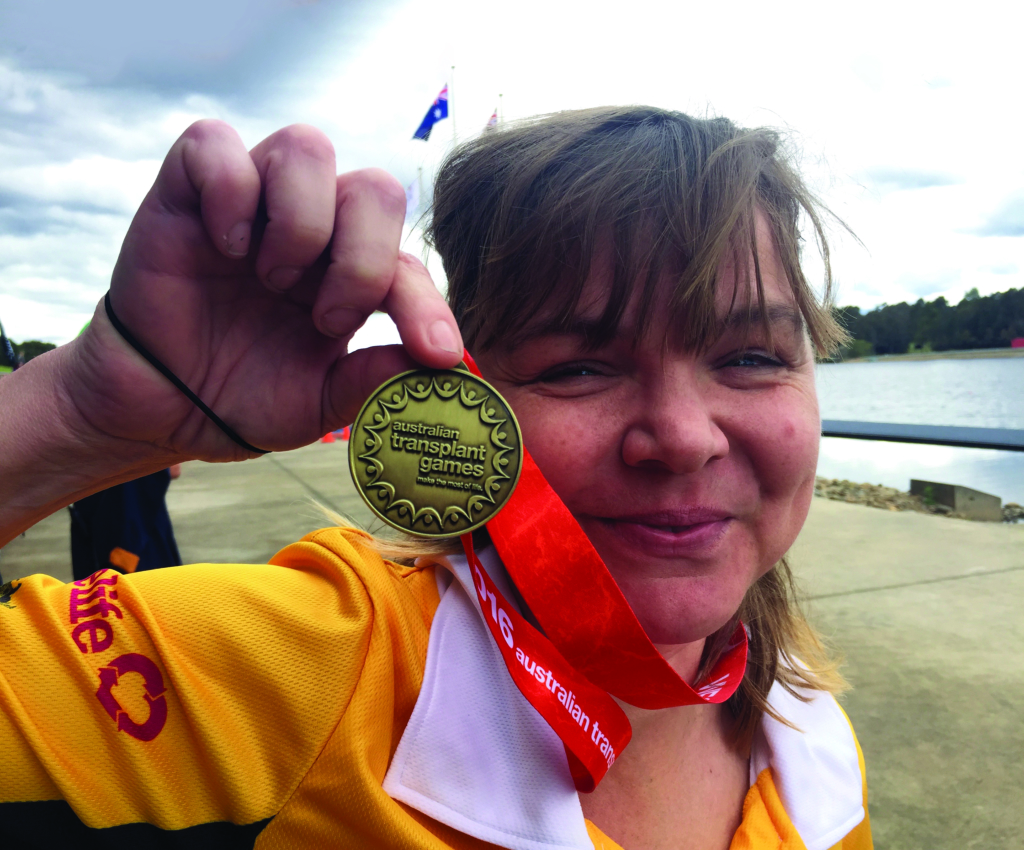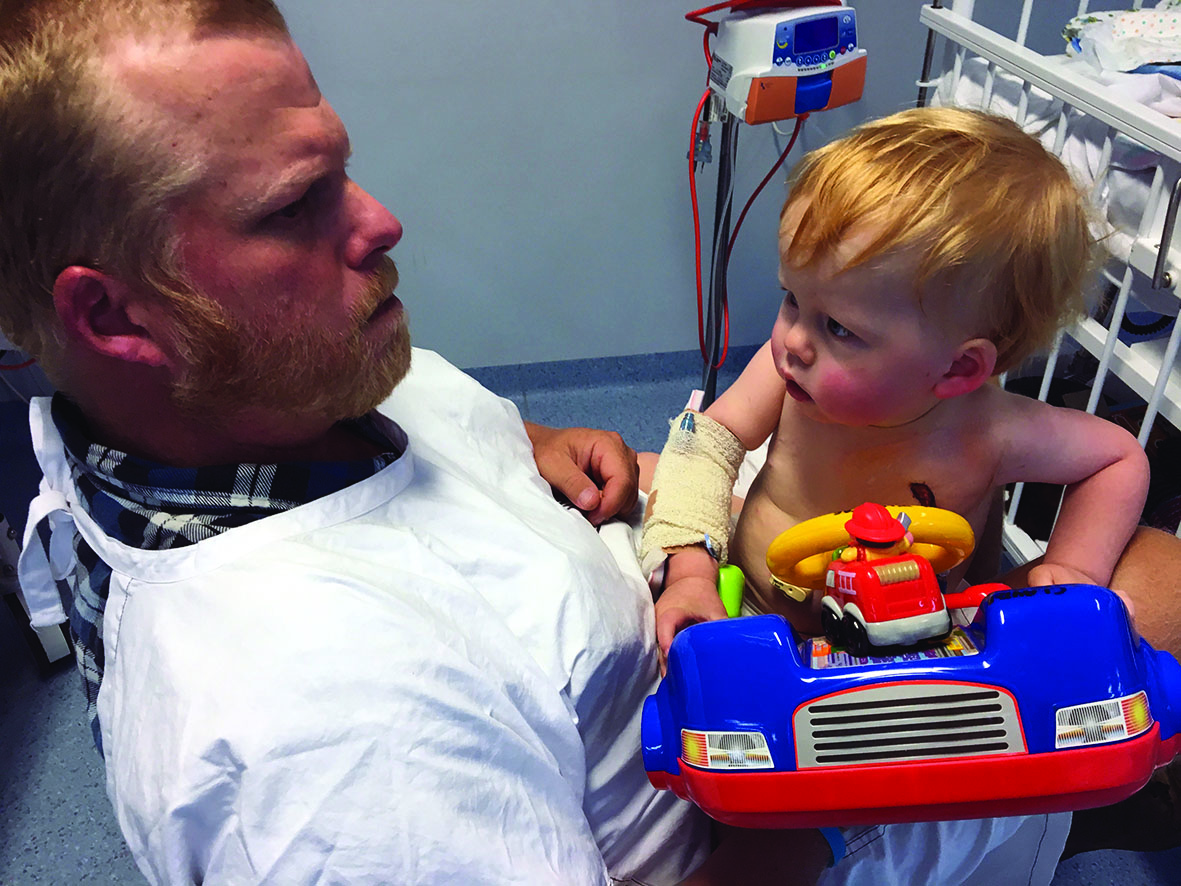At any time, around 1600 Australians are on waiting lists for organ transplants.[1]‘The Facts’, Transplant Australia website, <https://transplant.org.au/the-facts/>, accessed 22 October 2018. On average, one dies every week.[2]‘The Facts About Organ Donation’, Save Lives Donate Organs website, <https://www.sldo.com.au/organ-donation/facts-organ-donation/>, accessed 22 October 2018. Yet, as of 31 August 2018, just 2.3 million Australians aged sixteen and over have been legally accepted as donors – comprising 14.7 and 8.9 per cent of the national female and male populations, respectively – and a total of 6.6 million have registered their interest in donating.[3]Excludes those aged fifteen and younger; see ‘Australian Organ Donor Register Statistics’, Department of Human Services, <https://www.humanservices.gov.au/organisations/about-us/statistical-information-and-data/medicare-statistics/australian-organ-donor-register-statistics#a1>, accessed 22 October 2018. As of 2015, however, 69 per cent of Australian adult respondents have expressed their willingness to donate, according to a survey commissioned by the Australian Organ and Tissue Donation and Transplantation Authority.[4]Australian Organ and Tissue Donation and Transplantation Authority, Annual Report 2014–15, p. 43, <https://donatelife.gov.au/sites/default/files/OTA_AR2015.pdf>, accessed 22 October 2018.
These statistics came as a shock to filmmaker Richard Todd, who previously made coal-seam-gas documentary Frackman (2015). ‘I started asking, how can this be?’ he tells me.
If there’s such a willingness to donate, why aren’t more people on the list? It feels like one of those problems that’s preventable. There are other things we have no control of, but, if someone’s going to be burying or cremating their organs, when they could be literally changing or saving someone’s life, it feels like such a senseless waste.
In 2015, Todd tracked down six Australians in need of organ or tissue transplants. He spent the following two-and-a-half years recording their experiences. The result is Dying to Live (2018), an intimate documentary that captures the vicissitudes of living with chronic illness while enduring the limbo of waiting for a donation.
The viewer travels from Halls Creek in Western Australia’s Kimberley region, where 76-year-old Bardi man Henry Archoo awaits a new cornea to prevent blindness, to Perth, where Holly Ralph hopes for a lung transplant as she struggles with cystic fibrosis, a genetic disorder that causes her lungs to be only 16 per cent functional. In Todd’s home town of Margaret River, Peter Wood anticipates a third kidney transplant, having been through two others since crashing into a goalpost at the age of eleven. Dying to Live goes interstate, too. In Brisbane, Tony Beret needs a new liver to replace his cancerous one, and, in Koo Wee Rup – over 60 kilometres south-east of Melbourne – Alice Woods-Barnard prepares to give a kidney to her two-year-old son, Levi, who was born with a genetic kidney disease. Forty-five minutes’ drive west, in Mount Martha on Victoria’s Mornington Peninsula, Kate Hansen endures Type 1 diabetes while waiting for a pancreas and double kidney transplant; she’s been on the list for six years.[5]See ‘The Participants’, Dying to Live official website, <https://www.dyingtolive.com.au/the-participants>, accessed 22 October 2018.
Framing these six stories is that of the Turner family, based in Melbourne. Married couple Allan and Kim lost their daughter, Zaidee, in 2004, when, aged seven, she died suddenly of a cerebral aneurysm. After her death, her organs and tissue were donated to seven individuals, thereby making her the only organ donor under sixteen in Victoria that year. Shortly afterwards, the Turners founded Zaidee’s Rainbow Foundation, a not-for-profit organisation dedicated to raising awareness about organ and tissue donation.[6]‘Zaidee’s Story’, Zaidee’s Rainbow Foundation website, <http://www.zaidee.org/about/zaidees-story/>, accessed 22 October 2018.

Dying to Live opens with Zaidee’s story. A three-minute animation created by Mike Dunn, a Western Australia–based animator, depicts a bird’s-eye view of suburbs in shades of grey. The camera zooms in to an unidentified backyard, where a faceless girl plays alone on a creaking swing. As she walks into her home, Allan, in voiceover, recounts the evening of Zaidee’s death, soon joined by Kim. ‘You cry just listening to it,’ Todd recounts, explaining the decision to adopt animation.
The dialogue was so powerful […] Both [picture editor] Lawrie Silvestrin and I thought that, if we did too much in the way of visuals, we’d detract from the audio. We made the characters faceless so you wouldn’t be looking at their expressions, and stripped the background […] so all the attention was on their movements.
The generic appearance of the characters and their environment also suggests they could be anyone, in any place, at any time; after all, Zaidee’s death struck without warning. A similar tragedy might befall any family.
Todd foregrounds the emotive impact of the subjects’ experiences throughout the film, placing more emphasis on expressions of feeling and the unfolding of moments than on statistics and histories. While doctors’ waiting rooms and hospital beds do form vital elements of the setting, the viewer spends more time in homes, observing the effects of chronic illness on mental health, relationships, jobs and perceptions of the future. As Todd explains:
As a filmmaker, you’ve got to hang your hat on what you do. I only make documentaries and they tend to be in the moment – to have a lot of currency and emotion. I use emotion as a guide. We didn’t want to go too much into the backstories. We wanted to know why [the subjects] were sick and how long they’d been sick for – we stripped [the contextual information] back to just those two facts […] We wanted to go on the roller-coaster ride with the characters.
Rather than merely hearing from the film’s subjects, the viewer delves deep into their lives. When Kate’s home first appears, she says in voiceover, ‘I vomited so bad this morning. I’ve been vomiting for fifteen days now.’ The description contrasts with the seemingly tranquil house, canopied by a clear, blue sky. As the camera cuts to the kitchen, Kate admits despair: ‘I broke down today,’ she tells her mother. ‘I’m at the point now where I want to say to them, “Don’t even do the dialysis and just let me go. I’m over it.”’ Her distressed mother stresses, ‘That’s not even up for consideration’ – a statement that leads to an argument between them.
‘You get a real sense of not only the illness, but also the waiting – how it gnaws away not just at the particular person, but at family and friends,’ Todd tells me.
It dominoes out […] to sometimes hundreds of people. In the case of Kate, she posted on Facebook […] when it looked like she was going to end up with a heart operation, which might have meant going off the waiting list for a year after nearly seven years of waiting […] 1400 people would’ve seen that […] It was something that I didn’t know before I made the film. I had the impression that someone waits on the list, gets the transplant and lives to be 100. Actually, the waiting game resonated with me, in terms of how painful it was for everyone involved.
Although the finding of a compatible organ or tissue brings relief, it does not always end the waiting game. First come the risks associated with a transplant operation, then follows the possibility of the organ being rejected – or failing. ‘When you get a transplant, that is a foreign object going into your body. The first thing that’s going to happen is your body’s going to say, “Get it out.” Rejection is quite a common occurrence,’ says a surgeon at Brisbane’s Princess Alexandra Hospital as the camera enters the emergency department to reveal Tony lying in bed. Shown in dimly lit close-up, his partner, Peter Sibbald, describes Tony’s symptoms, including shaking, trembling, delirium and temperatures of 41.6 degrees Celsius, as well as the couple’s ensuing panic. A wardsperson wheels Tony towards an operating theatre before the camera cuts to a black sky scattered with stars. This is followed by a stark statement in white font that resembles handwriting, conveying a feeling of intimacy by reminding the audience of a personal note, letter or diary entry: ‘Tony has a more serious problem / Part of his new liver is dying’. As the backdrop implies, this is unexpected, unknown territory – for Tony, Peter and most viewers.

Although Dying to Live hovers on the brink of death and loss, equally important are the subjects’ optimism, triumphs and hopes. ‘I also asked of the characters and their families to think of anything else going on in their lives that was making them smile or providing a bit of relief,’ Todd says.
You can’t have people watching a movie for ninety minutes feeling like they’re just going to cry the whole time. It was really important to show the dark times and the other side – the uplifting, happier, brighter times […] It can be as simple as one minute.
Sometimes, this relief comes in the ability to find humour even in precarious circumstances. As Henry boards a plane at East Kimberley Regional Airport on his way to a cornea transplant, his expression of uncertainty – ‘I’m looking forward to seeing what’ll happen to me after this operation’ – is followed by a cheeky quip, ‘But I’m only going to look at the countryside and wildlife. I’m not going to look at women,’ inspiring the laughter of two flight attendants looking after him. Meanwhile, Tony, on hearing that his third kidney will come from Queensland, declares that he’ll have to learn to like bananas, and Holly smiles after pointing out that her ‘banging on about coughing’ must be boring for others. ‘It’s lovely to be in a cinema full of people and hear them laughing at one-liners,’ Todd recounts.
‘We’re hoping to increase donor numbers and, just as importantly, encourage people to have a conversation about it, so their loved ones realise their wishes. With the combination of the two, we can do our little part to decrease the number of people who die waiting.’
—Richard Todd
At other times, relief is found in the landscape. Before introducing each subject, Todd establishes their surroundings with breathtaking scenery, alternating between close-ups of objects of natural beauty and sweeping shots. Viewers arrive in Mount Martha via an aerial shot that pans over Port Phillip Bay, capturing an idyllic, summery scene: pale-green water, a strip of golden sand and a row of quaint beach huts, soundtracked by a gentle acoustic-guitar instrumental. In Henry’s home, the Kimberley, a blood-red sun fills the screen, followed by a long shot of a silhouetted plateau then sun-kissed native grasses.
Ultimately, however, the greatest relief descends following a successful transplant. Six months after receiving new lungs, Holly enters the Australian Transplant Games and wins a gold medal. For the first time, the viewer sees her running along a road, backdropped by still water – no longer in bed coughing, spluttering, injecting herself with medication and tied to a nebuliser. Loud, upbeat music and rapid cutting between long shots of the race and close-ups of Holly beyond the finishing line – tired but ecstatic – create an atmosphere of overwhelming optimism.

Dying to Live premiered at last year’s Sydney Film Festival, where it was a finalist for the Documentary Australia Foundation Award for Australian Documentary. It has since made the official selections of several Australian film festivals, including those at Adelaide, Brisbane and Melbourne, and screened in regional Victoria on 8 November, to coincide with what would have been Zaidee’s twenty-first birthday. The film has also been made accessible via cinema-on-demand,[7]‘Dying to Live’, Demand.Film, <https://au.demand.film/dying-to-live/>, accessed 22 October 2018. which allows community groups to host their own events, often featuring guest speakers.
For Todd, depicting the positive consequences of organ donation is crucial to Dying to Live’s social impact. ‘I almost wanted people to feel obliged [to register], once they saw the change they could make to the lives of others,’ he says.
We’re hoping that, at least, the film will instigate the thought, ‘I’ve been emotionally moved, and now I’m going to spend five minutes and jump online and just do it.’ We’ve seen people signing up while still sitting in the cinema or grabbing the form [we provided] to take home and fill out.
We’re hoping to increase donor numbers and, just as importantly, encourage people to have a conversation about it, so their loved ones realise their wishes. With the combination of the two, we can do our little part to decrease the number of people who die waiting.
https://www.dyingtolive.com.au
Endnotes
| 1 | ‘The Facts’, Transplant Australia website, <https://transplant.org.au/the-facts/>, accessed 22 October 2018. |
|---|---|
| 2 | ‘The Facts About Organ Donation’, Save Lives Donate Organs website, <https://www.sldo.com.au/organ-donation/facts-organ-donation/>, accessed 22 October 2018. |
| 3 | Excludes those aged fifteen and younger; see ‘Australian Organ Donor Register Statistics’, Department of Human Services, <https://www.humanservices.gov.au/organisations/about-us/statistical-information-and-data/medicare-statistics/australian-organ-donor-register-statistics#a1>, accessed 22 October 2018. |
| 4 | Australian Organ and Tissue Donation and Transplantation Authority, Annual Report 2014–15, p. 43, <https://donatelife.gov.au/sites/default/files/OTA_AR2015.pdf>, accessed 22 October 2018. |
| 5 | See ‘The Participants’, Dying to Live official website, <https://www.dyingtolive.com.au/the-participants>, accessed 22 October 2018. |
| 6 | ‘Zaidee’s Story’, Zaidee’s Rainbow Foundation website, <http://www.zaidee.org/about/zaidees-story/>, accessed 22 October 2018. |
| 7 | ‘Dying to Live’, Demand.Film, <https://au.demand.film/dying-to-live/>, accessed 22 October 2018. |





